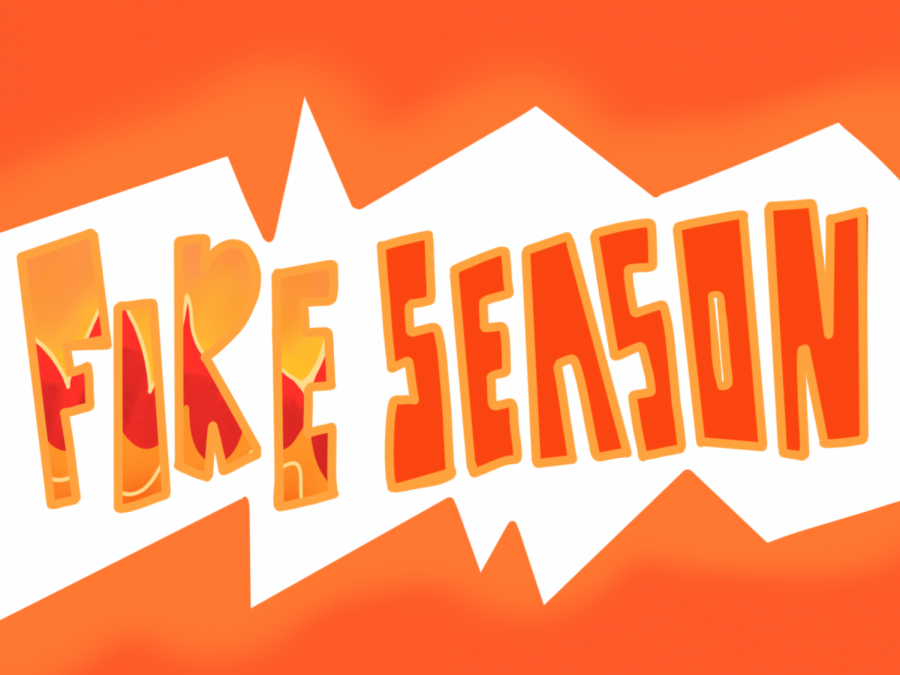- Beavers Digest
- Beavers Digest / Experience
- Beavers Digest / Experience / Create
- Beavers Digest / Experience / Outdoors
Prepping for Fire Season: What It Is and How You Can Help
May 21, 2021
If there’s one thing the Pacific Northwest cannot stop from happening, it’s fire season.
While we’re in the midst of a global pandemic and one of the worst droughts seen in years, it’s safe to say we’re all a bit hesitant about what this year’s fire season will look like.
Although it is hard to predict the time frame and severity of this fire season, there’s one thing that is for sure: it’s coming.
Where do we go from here? How can the public help? What should we be worried about? These are all questions that might be hovering in the deepest parts of your minds, while you try not to think about those gloomy days we experienced from smoke and ash in midsummer last year.
In hopes to put minds at ease, at least as eased as possible, we’ve done our best to research and answer those previous questions for the general public.
Fire season typically takes place within the months of May through October, with different regions having their peak of high-level-risk fire activity at different times.
In regards to the length of this year’s fire activity, United States Forest Service Forestry Technician Jordan Weijland said the Southwest has already had fires starting in mid April.
“I wouldn’t be surprised to see people working through November this year,” Weijland said. “Much of the West Coast is in a drought, so this fire season’s forecast doesn’t look good.”
With global warming worsening and weather conditions changing, those on the frontline of fires have a long, bumpy and smokey road ahead of them.
“Besides COVID-19, the main difference with last year’s fire season and previous ones was how many fires and how intense they were,” said Weijland. “We’re seeing wildfires impacting homes and communities like never before. With so many fires and so many acres burning, firefighting resources are thin, which only makes things worse. California had its largest fire season on record, along with the largest fire, and Oregon had its costliest fire on record. To sum it up, last fire season was unprecedented.”
While this is only Weijland’s perception on how long he and his colleagues will need to prepare to fight fires for this season, there is plenty of evidence which confirms how catastrophic and lengthy these fires will be.
According to the National Integrated Drought Information System, the Oregon statewide total for precipitation in March and April ranks as the second driest on record since 1895. After nearly a century and a half of rainfall, this year is ranked the second worst.
Oregon State University Fire Program Manager Carrie Berger spoke on what specific factors of climate change make the perfect recipe for a delicious catastrophic wildfire.
“Temperatures are rising,” Berger said. “Warming temperatures increase the likelihood that fires will burn more intensely. Snow melts sooner and with the warming temperatures [and] evaporating moisture, this leads to drier soil, forests, plants and makes vegetation more flammable. Forests are drier for longer, making conditions just right for wildfires to ignite and spread.”
While these facts might come across scary, it’s important to remember fire is a natural thing. As West Coast locals, we grow up flinching at the smell of a distant campfire. But fire is one of our five natural elements. Nature quite literally would not survive without fire. However, when humans get involved, those worrisome statistics start spiraling out of control.
So how can the general public help mitigate the devastating wildfires, you may ask? There are a number of ways to help prevent and alter the predictions for this upcoming season.
Unit Forester for the Oregon Department of Forestry with the West Oregon district, Ted Erdmann, said, “Now is the time to prepare. Don’t wait until summer gets here.”
He further explained what people who live in Benton County can do right now, prior to the start of fire season.
“Folks can do things like clearing leaves and needles off their roofs and cleaning out their gutters,” Erdmann said. “And creating what we call defensible space around their homes and other structures by mowing and pruning and trimming to make their home and other structures more survivable in the event of a wildfire.”
The next thing Erdmann pointed out for people in Benton County to keep in mind is that “our local, single, biggest cause of fires is debris burning.”
While burning debris is an extremely important tool for home owners and landowners, Erdmann emphasized the fact that there is a countywide ban on burning during fire season to help prevent debris burns from getting out of hand and causing massive wildfires.
On that same topic of human-created fires, Weijland also recommends people put out any campfires that are not being watched and to follow burning regulations set by forests.
Though camping with family and friends is a very fun and inclusive activity, Berger noted campfires and embers are the leading cause of home ignitions in wildfires.
Catastrophic wildfires can either be stopped by humans or started by humans. Who’s to say a lightning strike won’t hit a tree? No one can know for sure. But who’s to say human errors will cause a fire? Of this, we are certain.
We’re all worried, but we can all do our part to keep our homes and air quality safe. Listen to Smokey Bear, he always knows what he’s talking about.






